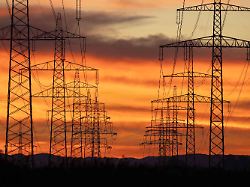Lawsuit against WTS threatens
Scholz’s double whammy is also in the Union’s sights
November 17, 2023, 4:15 p.m
Listen to article
This audio version was artificially generated. More info | Send feedback
The climate fund overturned by the Federal Constitutional Court is not the federal government’s only special fund. The Union is currently examining another lawsuit against the 200 billion dollar economic fund. With the WTS, Chancellor Scholz financed the energy price caps after the start of the Ukraine war.
After the Federal Constitutional Court’s ruling against the KTF climate fund, further special government funds are coming into focus. Because of the judge’s ruling, the traffic light coalition made up of the SPD, Greens and FDP was unable to finalize the budget in the responsible committee of the Bundestag as planned by the weekend. Next Tuesday, experts will be heard on the consequences of the verdict before further decisions are made.
The Union, which has already successfully sued the KTF climate fund in Karlsruhe, is now primarily targeting the Economic Stabilization Fund (WSF). Here, the traffic light – similar to the climate fund – created a financial cushion when the debt brake was still suspended due to an emergency. This should be able to be used in later years, even though the debt brake will already be in effect again. The Union is therefore considering another lawsuit and is currently having a legal opinion drawn up. According to coalition and government circles, this is being taken very seriously at the traffic light. There are dangerous parallels, it was said. What exactly is the WSF?
How long has the WSF existed?
The so-called special fund was created as a subsidiary budget in March 2020 when the coronavirus pandemic spread in Germany and the first lockdowns were imposed. The funds were intended to mitigate the economic and social consequences of the exceptional situation. The fund initially had a volume of 600 billion euros, mostly with guarantees and sureties, but this was never exhausted.
Reactivated for another purpose
The WSF was actually supposed to be discontinued as the pandemic subsides. The Russian attack on Ukraine then caused the next crisis, with energy prices skyrocketing in the meantime. So the WSF was reactivated for a different purpose. Since November 2022, measures to dampen the energy crisis have also been financed from this. The pot was filled with up to 200 billion euros. Issues are limited until June 30, 2024.
What will the money be used for?
The additional funds are subject to earmarking. They are used to finance gas and electricity price caps for households and companies. Chancellor Olaf Scholz described this aid as a “double whammy”. Companies such as the gas importer Uniper, which were on the verge of collapse during the energy crisis, were also supported with WSF funds.
100 billion left
At the end of 2023, the unused funds in the WSF are expected to amount to over 100 billion euros. This had already sparked desire among the Greens to reallocate the remaining funds and use them for other purposes. The judges in Karlsruhe may have put an end to such considerations.
